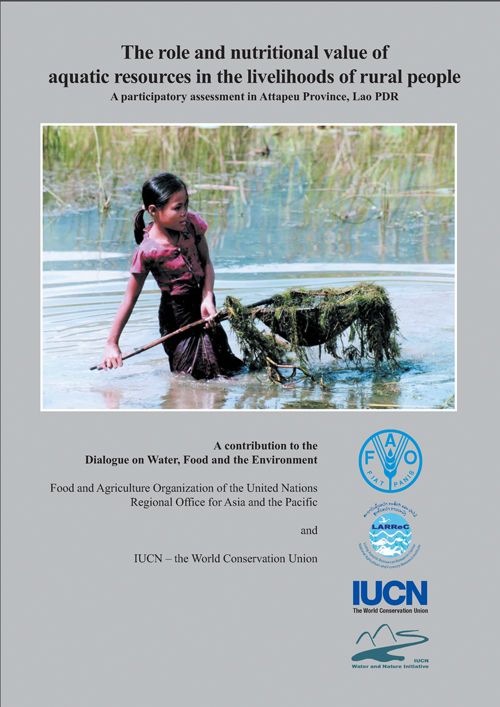The role and nutritional value of aquatic resources in the livelihoods of rural people: A participatory assessment in Attapeu Province, Lao PDR
29 April 2004 | 999 Downloads | .pdf | 1.3 MB | Food Security, Safety and Certification, Gender, Lao PDR, Livelihoods, gender and social issues
As a contribution to the Dialogue on Water, Food and the Environment, the FAO Regional Office for Asia and the Pacific and IUCN – the World Conservation Union have undertaken a joint initiative to investigate the relationships between living aquatic resources, rice agriculture and the livelihoods of the people who manage these systems.
This assessment is intended to address the concern that the ecological and livelihood functions and values of rice fields and adjoining wetlands are not fully appreciated in development planning. A participatory assessment was conducted in Attapeu Province, Lao PDR to determine the role of aquatic resources in the nutritional status of people engaged in rural livelihoods and to determine any opportunities, constraints or threats that may exist concerning the management of aquatic resources and future development in the province.
People from the three communities of Tamoyot Village, Sanamsai District, Saisi Village, Saisetha District, and Gayeu Village, Samakisai District participated in activities designed to assess the local availability and use of aquatic resources, their importance in local livelihoods, and the over-all health and nutritional status of the villagers.
The results of these activities illustrate that a broad diversity of aquatic plants and animals (approaching 200 species) are frequently accessed and used by villagers, and that fish and other aquatic animals make up the main animal protein sources in peoples’ diets. Local conditions concerning health and nutrition, however, are quite low and evidence of malnutrition (underweight, stunting, and wasting) was observed in significant numbers of people in all three villages. Typical diets are insufficient in terms of quantity and quality, and are especially low in protein and fats.
These findings indicate that strategies for rural development, food security, and poverty alleviation in these areas need to pay special attention to aquatic resources management to ensure the health and well-being of rural people. Integrated management of freshwater and wetland resources is necessary to meet objectives of increased rice production whilst maintaining the viability and productivity of the aquatic resources upon which rural livelihoods depend.
Copyright, all rights reserved.

